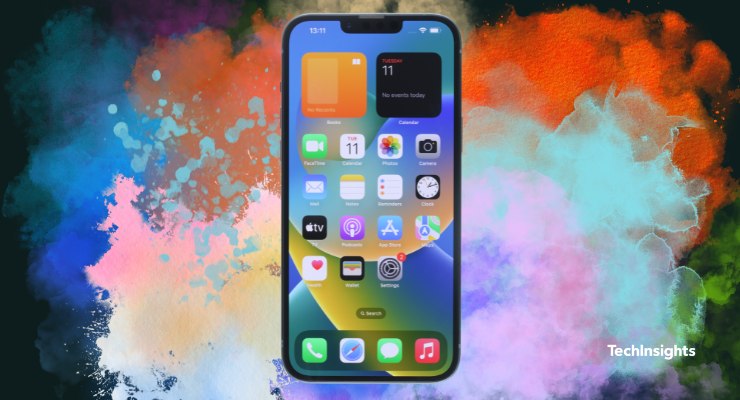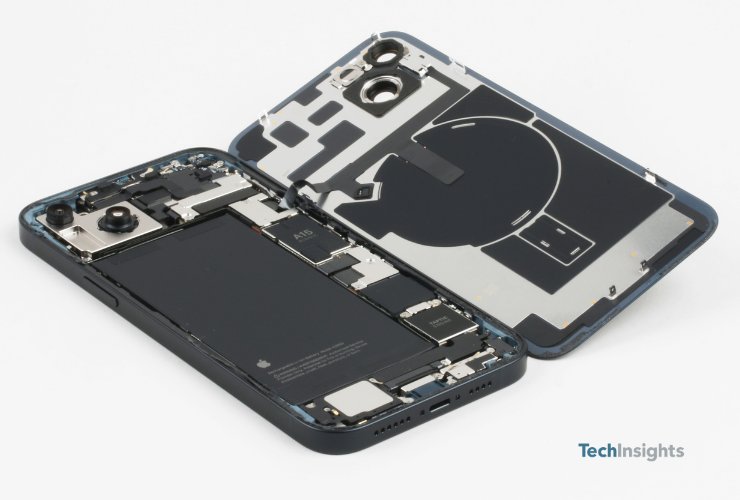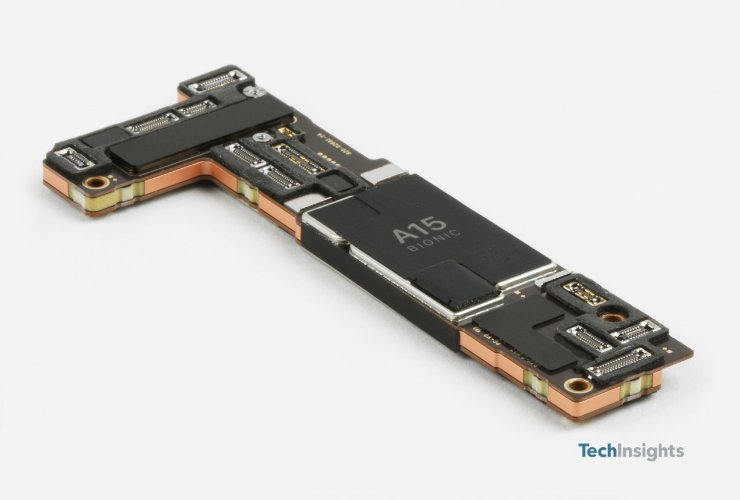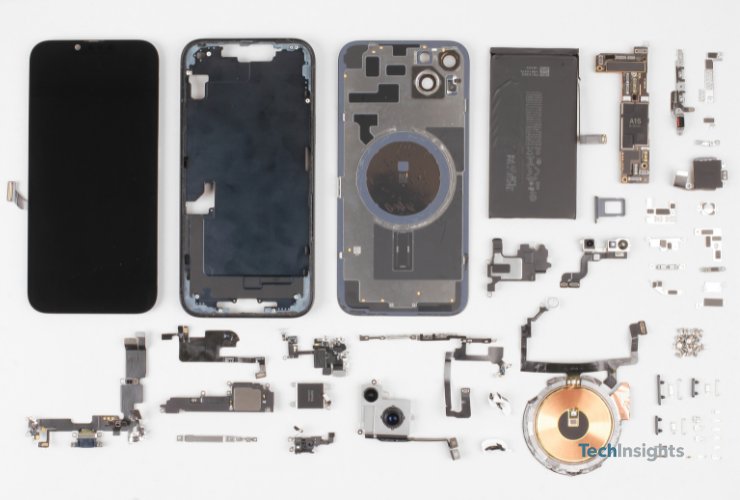Apple iPhone 14 Plus Teardown

Explore our comprehensive teardown of the Apple iPhone 14 Plus. Discover detailed insights on components, design, and performance with expert analysis from TechInsights.
Welcome to TechInsights’ in-depth teardown of the Apple iPhone 14 Plus. In this comprehensive analysis, we uncover the inner workings of Apple’s latest flagship device, offering a closer look at its components, design, and technological advancements.
The iPhone 14 Plus marks a significant upgrade in Apple’s smartphone lineup. With enhanced features and design improvements, it promises a superior user experience. Our teardown provides valuable insights into how these innovations translate into real-world performance.
This summary outlines the analysis found on the TechInsights' Platform.
Enter your email to register to the TechInsights Platform and access the full analysis summary, as well as the report.
Already a TechInsights Platform User?
A Glimpse at the iPhone 14 Plus
Released in September 2022, the iPhone 14 Plus represents the pinnacle of technological advancement in the smartphone world. It incorporates a host of new features and cutting-edge components, reaffirming Apple's commitment to pushing the boundaries of what a smartphone can achieve.

Main Board Insights
The main board of the iPhone 14 Plus serves as the heart of the device, housing critical components that drive its performance. Notable elements on this board include:
- 64-bit Hexa-core Applications Processor: Powering the device is Apple's formidable 64-bit hexa-core applications processor, ensuring blazing-fast performance for all tasks.
- Mobile LPDDR4X SDRAM: With 5 GB of mobile LPDDR4X SDRAM from Samsung, the iPhone 14 Plus offers seamless multitasking capabilities and rapid app launches.
- Power Management and Audio Codecs: Apple's power management and audio codecs play a pivotal role in optimizing power efficiency and delivering exceptional audio quality.
- Various Electronic Components: The main board also hosts a range of electronic components, including DC/DC converters, LED drivers, and voltage level transistors from reputable manufacturers such as ST Microelectronics, Texas Instruments, Cirrus Logic, Nexperia, Onsemi, and NXP Semiconductors.

Sensor Flex Board
The sensor flex board is instrumental in facilitating communication with external internet-connected devices. This board includes essential components like a three-axis electronic compass, a proximity sensor, and an ambient light sensor from ST Microelectronics, enabling the iPhone 14 Plus to interact intelligently with its surroundings.
RF Board: The Heart of Connectivity
The RF (Radio Frequency) board is a critical component responsible for connecting the smartphone to cellular networks, Wi-Fi, Bluetooth, and other wireless technologies. This board comprises key components, such as:
- Qualcomm's Snapdragon X85 5G Modem: Enabling lightning-fast 5G connectivity.
- Apple's Audio Amplifier: Ensuring high-quality audio performance.
- Qorvo's 5G Average Power Tracker and GPIO Interface: Contributing to efficient power management.
- Analog Devices' Haptic Engine Driver: Enhancing tactile feedback.
- Murata's 2.4 GHz Wi-Fi Front-end Module: Facilitating robust wireless connections.
- Skyworks' LB Front-end Modules and RF Switch: Enabling seamless communication across various networks.
- Broadcom's UHB LTE and 5G NR Front-end Module: Enhancing LTE and 5G capabilities.

The partial teardown of the Apple 14 Plus smartphone offers us a glimpse into the intricate engineering and components that power this technological marvel. From its powerful applications processor to its advanced sensors and connectivity features, every element has been meticulously designed to deliver a superior user experience. As Apple continues to innovate and push the boundaries of what's possible in the world of smartphones, the iPhone 14 Plus stands as a shining example of their commitment to excellence and technological advancement.










